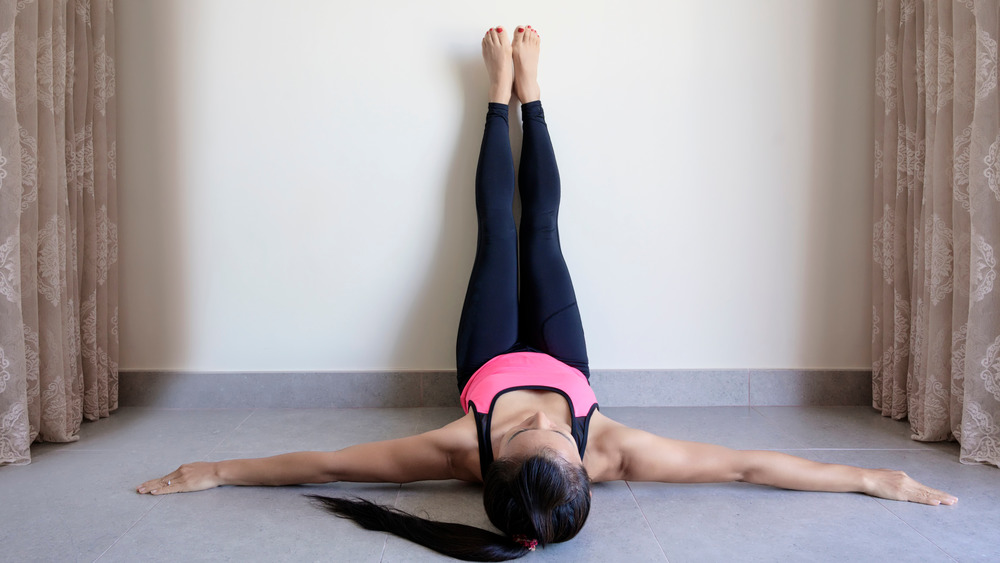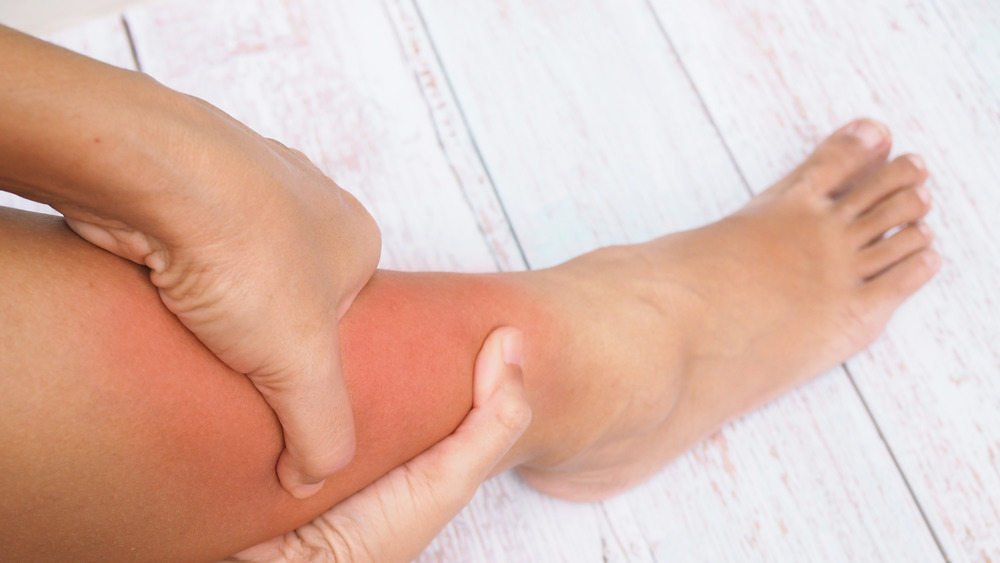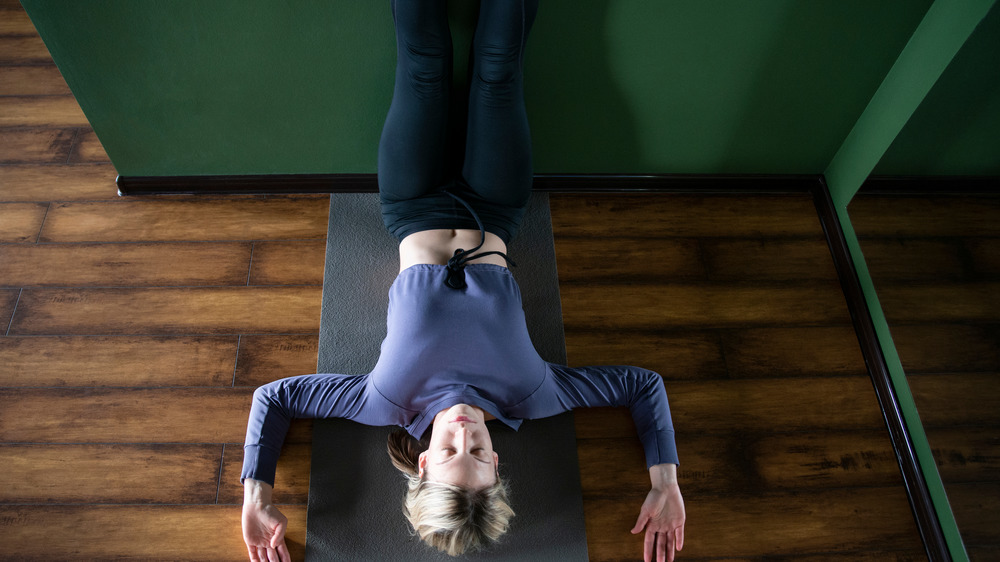The Legs Up The Wall Yoga Pose Has Some Surprising Benefits
The practice of yoga is thought to be thousands of years old and is still one of the most popular forms of exercise and movement to date. Yoga as a whole boasts numerous health benefits, such as increasing flexibility, building up muscle strength, increasing bone density, and improving cardiovascular and mental health to name a few (via Yoga Journal). While the entire practice has a positive effect on overall well-being, it's important to note that each individual yoga pose also benefits the mind, body, and soul.
Legs Up the Wall Pose, also known by its Sanskrit name Viparita Karani, is a restorative posture that claims to relieve stress, increase circulation and lymphatic drainage, relieve back pain, and if you search enough on Google, cure about every ailment under the sun (via Healthline). So what's true and what is just false?
Restorative yoga poses traditionally aim to calm the body down and reduce stress. Practicing Legs Up the Wall Pose, coupled with deep breathing, may very well decrease stress. Yoga as a whole is known to activate the parasympathetic nervous system (PNS), which is responsible for your "rest and digest" bodily functions. Focusing on your breathing while having your legs up the wall can slow the breath down, stimulating the PNS which is responsible for reducing your heart rate, relaxing tense muscles, and operating bodily functions in a more efficient and less stressed manner.
Additional benefits of Legs Up the Wall pose
Elevating your legs up the wall may also improve blood and lymphatic fluid circulation. With the legs in a position higher than your heart, you are reducing the pressure in the veins of the legs and thus encouraging more blood flow back to the heart, where it can be recycled and reoxygenated, according to Heathline. By reducing pressure and fluid buildup in the legs, people who spend prolonged periods of time on their feet may notice an improvement in muscle fatigue as well.
Prolonged standing may also lead to chronic low back pain. In addition to poses such as forward fold, which counteracts the pressure on the low back (via Yoga Journal), Legs Up the Wall may relieve some strain from the low back as well.
While all of these claims sound great, the truth is that there is no significant scientific research on Legs Up the Wall Pose, in particular, to claim any major life-changing benefits. There is, however, substantial evidence on the beneficial nature of yoga overall, on your health.
How to get into the ideal Legs Up the Wall pose
So how do you get into this yummy, restorative pose? While still considered an inverted pose, much like handstands, Legs Up the Wall is accessible to more people since you're supported by the floor. Start by lying on your back near a wall and slowly moving your butt towards where the floor meets the wall. Naturally, your legs will be elevated, making an L-shape with the top half of your body (via Well + Good).
Jessica Matthews, yoga teacher and assistant professor of integrative wellness at Point Loma Nazarene University, offers the following modification to Well + Good, if the traditional posture is not accessible. Instead of having the wall support you, pull up a chair. Again, start by lying on the floor with your butt against the legs of the chair. Then, bend the legs at the knee to form a 90-degree angle. With the calves and feet supported by the chair seat, the posture may be more comfortable.
If after a few minutes you start to notice your legs going numb, you're not alone. While the posture can help improve circulation, the decreased blood flow to the legs can lead to some numbness and tingling, so slowly make your way out of it. If you feel uncomfortable pressure in your face, also make your way out of the pose. Yoga is not meant to be painful. Always listen to your body. Before starting any sort of yoga practice, make sure to consult with your medical provider, especially for people with high blood pressure, glaucoma, and neck or back injuries.



